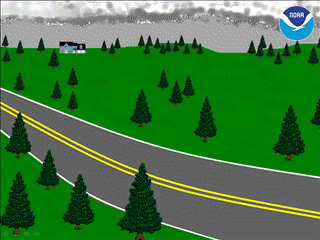National Lightning Safety Council
- Lightning Safety
Council Home - Lightning
Science - Personal
Safety - Sports and
Recreational Activities - Medical
Information - Building
Protection - U.S. Lightning
Fatalities - Lightning Safety
Awareness Week - Resources
Recursos - FAQs
- About the
Lightning Safety Council - Our
Partners
Lightning and Cars
 You’ve probably heard that a car will protect you from lightning. That is true, but it has nothing to do with the rubber tires. Like trees, houses, people, and anything that is outside when thunderstorms are in the area, cars are at risk of being struck by lightning. Unfortunately for the owners of vehicles that have been struck by lightning, the myth that rubber tires protect a vehicle has proven to be wrong. The good news is that the outer metal shell of a hard-topped, metal vehicle does provide protection to anyone fully inside. Vehicles such as motorcycles, bikes, golf carts, AATVs, and lawnmowers are not safe and should be avoided when thunderstorms are in the area.
You’ve probably heard that a car will protect you from lightning. That is true, but it has nothing to do with the rubber tires. Like trees, houses, people, and anything that is outside when thunderstorms are in the area, cars are at risk of being struck by lightning. Unfortunately for the owners of vehicles that have been struck by lightning, the myth that rubber tires protect a vehicle has proven to be wrong. The good news is that the outer metal shell of a hard-topped, metal vehicle does provide protection to anyone fully inside. Vehicles such as motorcycles, bikes, golf carts, AATVs, and lawnmowers are not safe and should be avoided when thunderstorms are in the area.
When cars are struck by lightning, the lightning typically strikes either the antenna of the vehicle or along the roofline. The lightning then passes through the vehicle’s outer metal shell, through or over the tires, and to the ground.
Although every lightning strike is different, damage to the antenna, electrical system, rear windshield, and tires is common. The heat from a lightning strike is sufficient to partially melt the antenna of a vehicle and can cause what seems like a small explosion of sparks as tiny fragments of metal melt and burn. A portion of the discharge may find its way into the vehicle’s electrical system and may damage or destroy electronic components, potentially leaving the car inoperable. It’s also common for the lightning to destroy one or more tires as it passes through the steel belts to the ground. In some cases, lightning may cause the vehicle to catch on fire.


